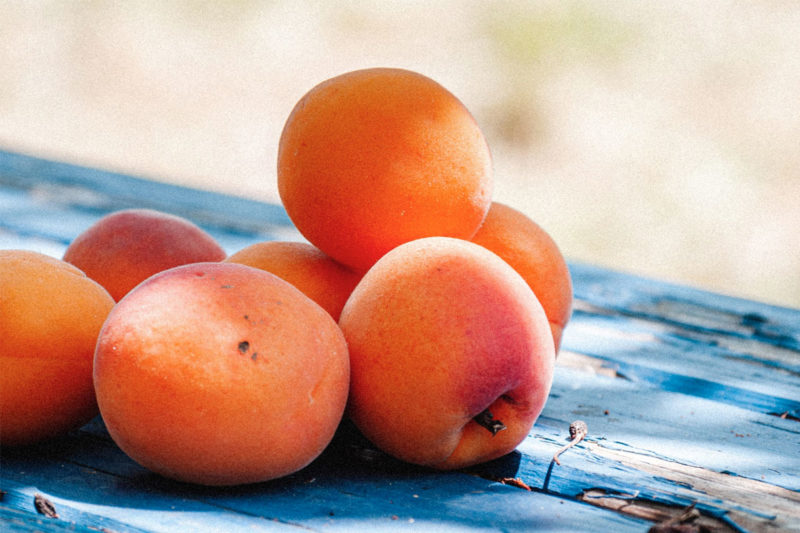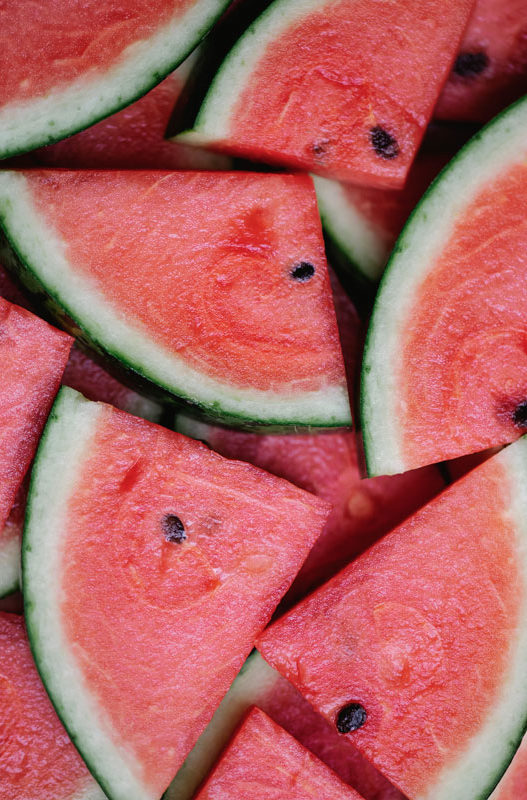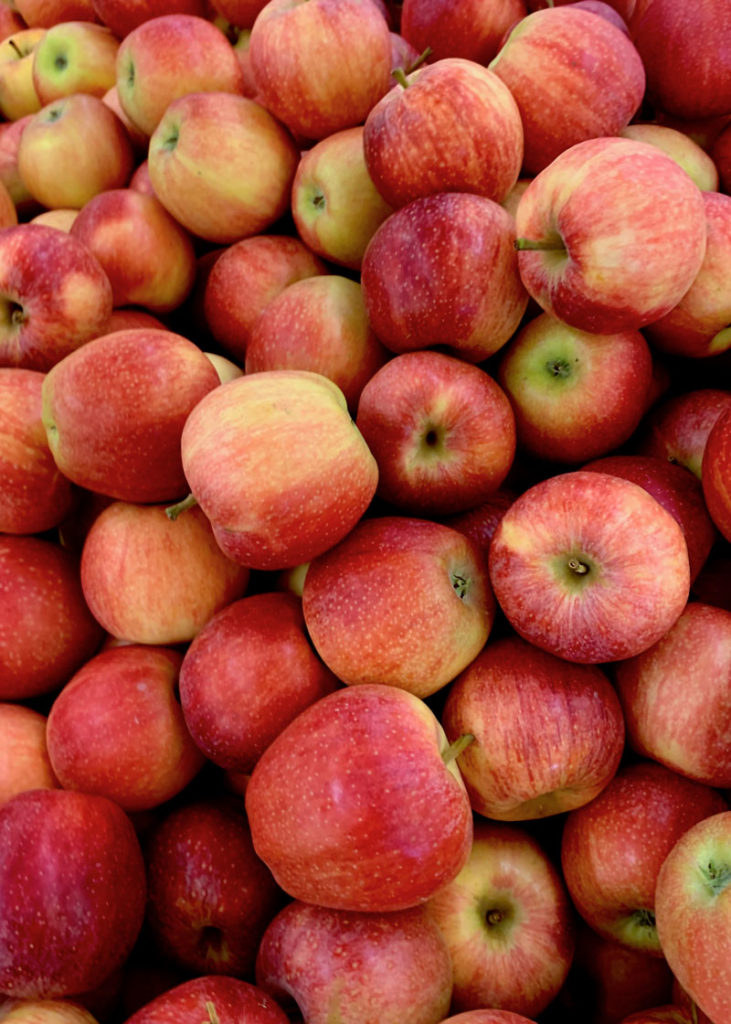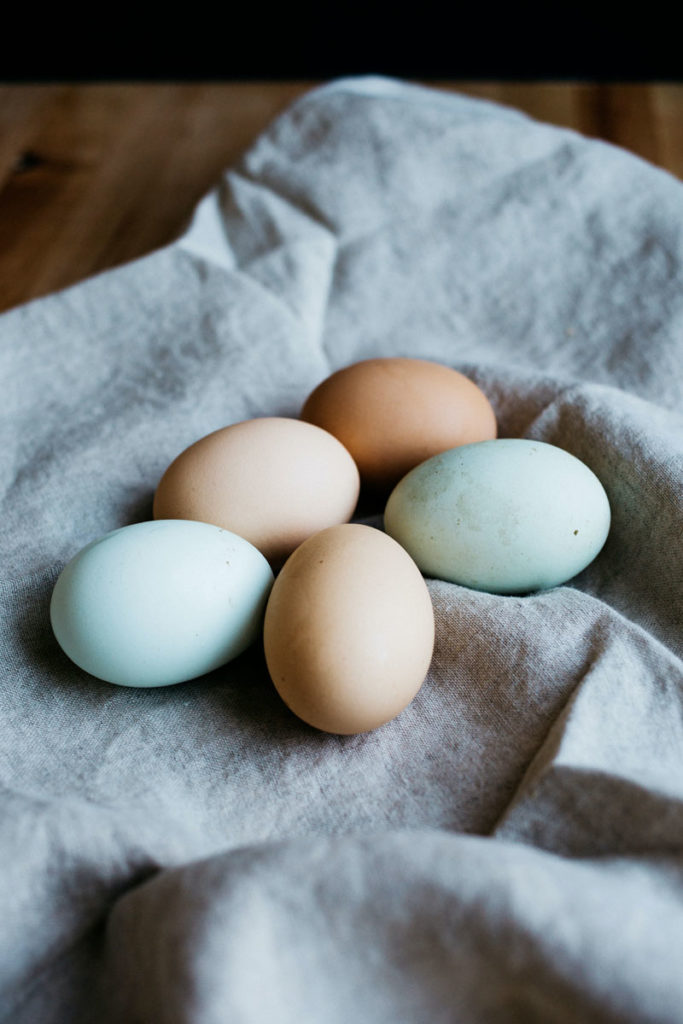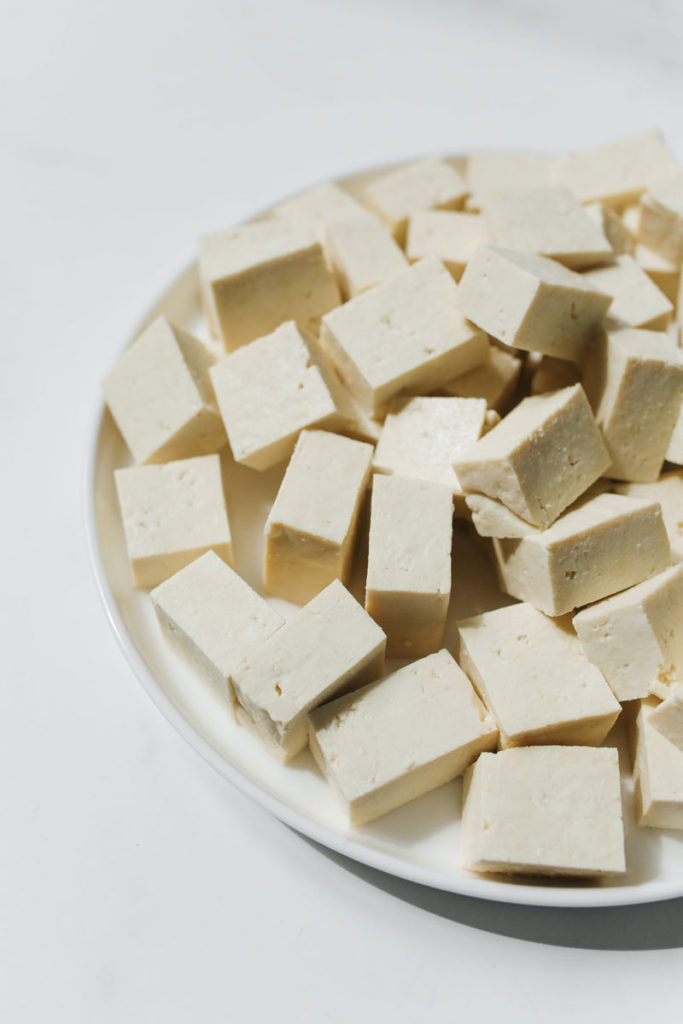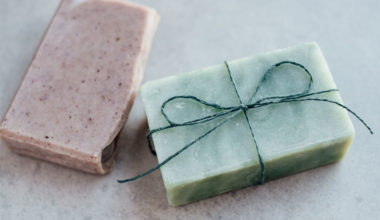Put some colour in your floral-print shopping bag!
That summer feeling is here, and you won’t have failed to notice it. A good reason to eat better and embrace Clean Eating. So make the most of this sunny season to put together the perfect shopping basket. Here are a few healthy ideas to follow up, as vitamin-rich as they are colourful.
First of all, let’s look at the fundamentals of a healthy, clean diet. Eating healthily is about favouring fruit and vegetables, pulses, animal protein in proportionally small amounts (1/3 of your plate, with vegetables making up the other 2/3, and not the other way round), always (or where possible) sourced locally, seasonal and mostly organic. Foods should be unprocessed or minimally processed, and most importantly, meals are varied, balanced and keep the acid-alkali balance right, with little or no added sugar. It’s all rounded off (but not washed down, since you’ll want to try and drink outside of mealtimes) with mineral water with the lowest possible dry residue ratio, so as not to overwork the kidneys. Bear in mind that water is the primary source of sustenance. Not only does it sustain all the cells, it is also their means of communication. Water is essential for its hydrating function and its role of cell messenger.
A myriad of colours in your shopping basket
Since it’s summer, now is the time to carry out a reset and let your intuition guide you towards healthy, clean foods to slip into your shopping bag or trolley. Because Mother Nature is smart, and the body “knows”, there’s every chance that you’ll be drawn to things that are good for you right when your body needs them. Fortunately it doesn’t work that way with cravings for fries and hamburgers! Although a distinction has to be made between a craving and an addiction. If the craving for crisps and cola hits every time you watch your favourite series, you’re dealing with a habit or even an addiction. Just putting together a TV platter with crisps and cola to have a fun time, and doing so repeatedly, is enough for the same situation to trigger thoughts of the taste of those foods the following times. So what causes it to happen? State-dependent memory, the kind of memory that associates multi-sensory sensations with memories. Do you get how it works now? Then it’s up to you to deprogram this state-dependent memory trigger (like Proust’s Madeleine cake in his famous novel on food-triggered memories) and embed a healthier, cleaner one in its place.
The perfect shopping choices start in your head!
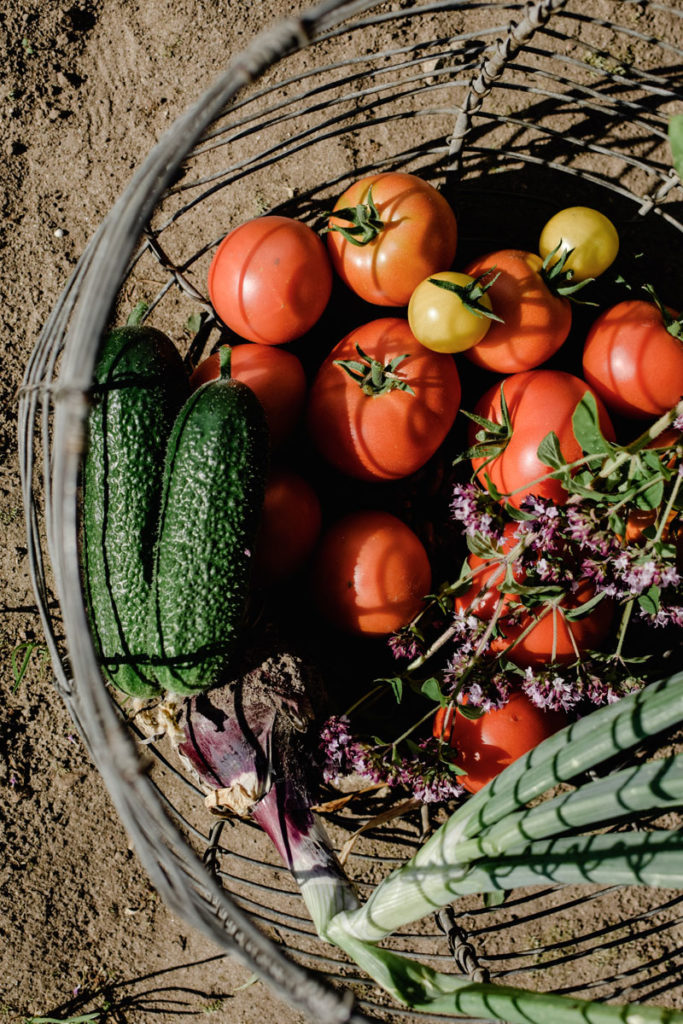
Yes, grocery shopping the Clean Eating way requires some preparation. Pick out the kind of shopper that you like the best (whether a rattan basket, tote bag, dayglo mesh bag or smart tartan trolley!) and grab it with the intention of filling it with carefully chosen, good things. Whether you have an audience or not, go right ahead and say out loud “I’m going grocery shopping to make healthy, tasty meals”. Then head to the market (or fruit and vegetable section of your mini mart) and get ready to watch a film in Technicolor. What does that have to do with it? Well, clearly stating this intention will keep you away from junk food items. Although you’ll likely be tempted, your subconscious will do its job of warning you off (“stop that – you promised!”). Also, the more colourful your shopping is, the more colourful your meals will be, too. And a meal with a variety of colours vouches for a variety of nutrients to match: it will contain minerals, trace elements, antioxidant pigments, vitamins and fibre. And it’s so easy to do that there’s no reason to stick with black and white. Besides, your brain is no fool. Walk through the fruit and vegetable aisles and take the time to cast your eye over the summer produce: tomatoes, aubergines, strawberries, lettuces and cucumbers. Instinctively, we gauge the freshness and quality of produce based on its appearance. Then a cascade of images, tastes and smells takes over, and almost right away your mouth starts to water! So go on, get your shopping basket loaded up with vitamins!
Greens to lighten up
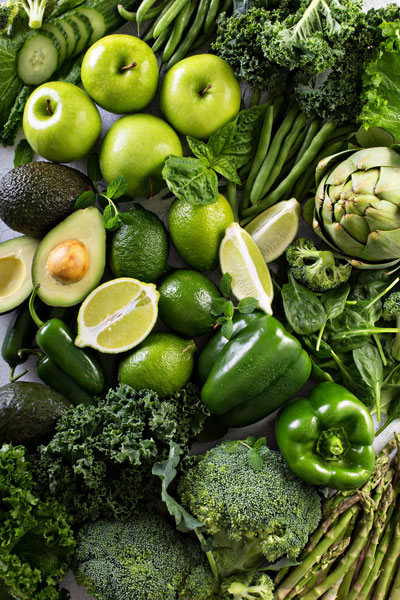
Green produce has detoxifying powers thanks to chlorophyl, whose mission is also to oxygenate the body. And better oxygenation supports proper immune function (hence the merit of doing at least 30 minutes’ exercise a day)! And that’s not all! Green is also the colour of the glucosinates found in broccoli, Brussels sprouts and green cabbage, which have recognised cancer-fighting properties. With their detoxing role, glucosinates also help activate the enzymes that detoxify cancer cells. So make a beeline for cucumbers, green apples, limes and avocadoes.
Red for heart health
It protects the heart and eyes thanks to lycopene, a super antioxidant closely related to carotenes which imparts bold hues to tomatoes, peppers, pomegranates, red apples, pink grapefruit, strawberries, redcurrants, watermelons… Go for the red and the lycopene in it, which prevents cardiovascular disorders due to its ability to promote communication between cells.
Purple and blue – just like red!
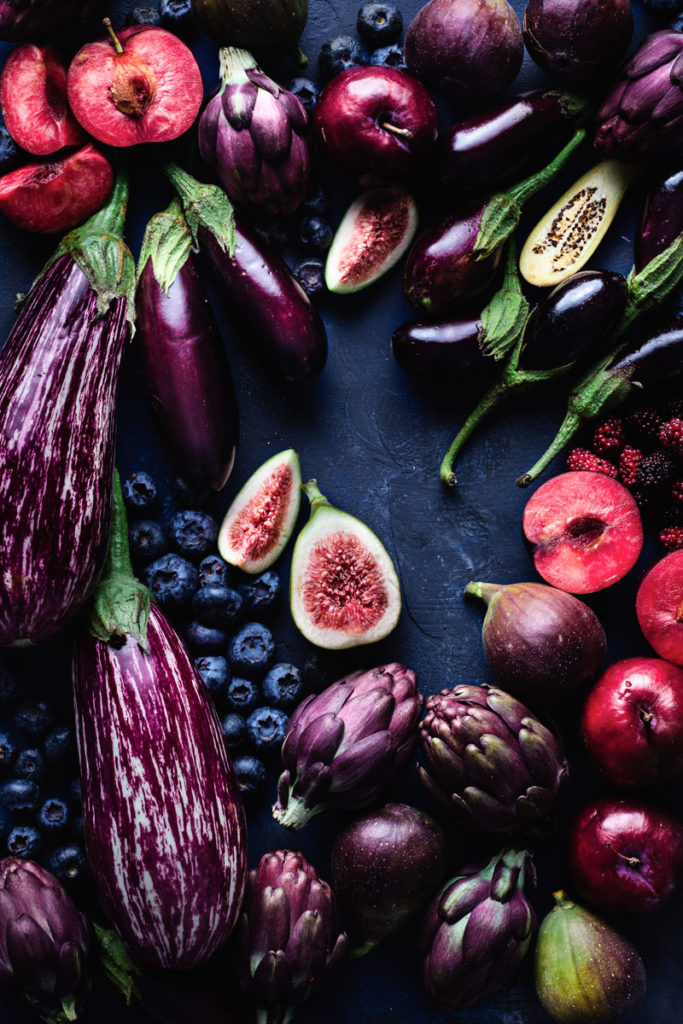
Just next to red, purple does almost the same jobs. This strong colour indicates that resveratrol is close by. This antioxidant is good for the heart, as are anthocyanins, which protect the skin. Ask your market trader for a selection of red onions, aubergines, blackcurrants, damsons and grapes. Blue hues, which indicate the presence of phenol, strengthen the blood vessels. Blue sometimes verging on purple is best represented by the aubergine family, figs and blueberries.
Yellow and orange – anti-inflammatory
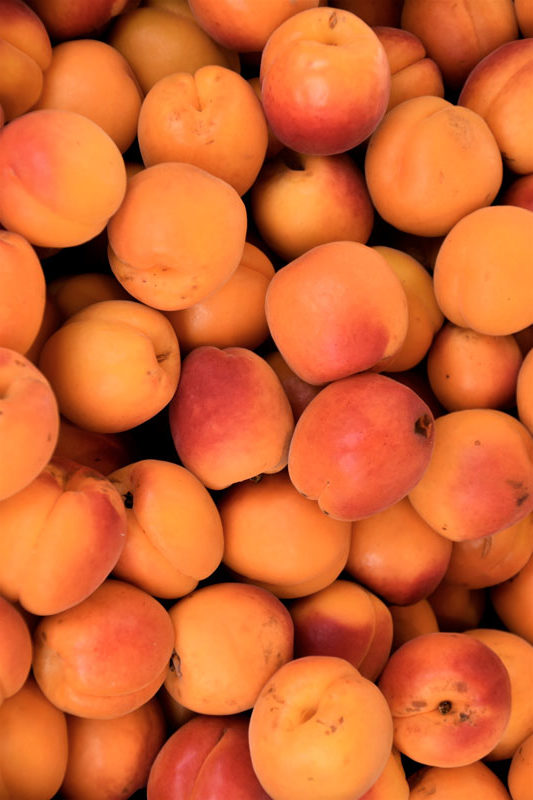
Yellow indicates the presence of bioflavonoids, which are a powerful anti-inflammatory. Make a beeline for yellow peaches and yellow peppers, yellow heirloom tomatoes, lemons, basically anything yellow. As well as tasting good, these sun-coloured fruit and vegetable varieties fight bad cholesterol. Orange is about beta-carotene that makes the skin glow. It’s a precursor to vitamin A which supports eyesight, and most importantly boosts immune function. This colour is also credited with the ability to act as an antiviral and antihistamine (perfect if you’re dealing with allergens or mosquitoes, as in the latter case it relieves the discomfort of bites). So head straight for peaches, apricots and mangoes.
White and beige for blood pressure
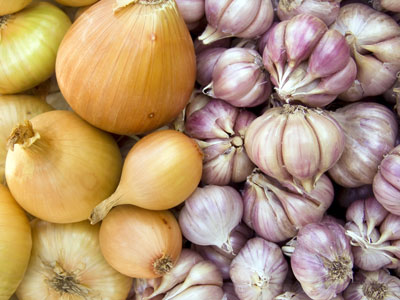
As for these two colours, they indicate a reserve of allicin and anthoxanthin which, together, potentiate and regulate blood pressure. What’s more tempting than adding a generous pile of chopped fried garlic and onions to your turnip dishes?
Shop local!
In summer, your holiday destination will have a bearing on what groceries you buy. Don’t forget to draw inspiration from the local produce. Unless what’s on offer is totally at odds with your usual diet (too high in fat, too meat-heavy) or your tastes (too spicy). Let yourself be guided by what the market traders offer. Corsican chestnuts and clementines, Cavaillon melons, Paimpol white beans… All of these controlled designation of origin epithets (French: AOC) are drawn from the local natural heritage. And this gives local fruit and vegetables all the nutrients from the earth that they need to grow! By choosing to eat local produce, you’ll get all the benefits of this natural heritage. Also, as a bonus, you’ll be getting fruit and vegetables that have not been harvested barely ripe, or travelled long distances to end up on your plate devoid of any nutrients.
Changing shopping habits
Especially when it comes to meat products… In the 1960s-70s, buying food for the table meant buying five kinds of meat: beef, pork, mutton, chicken and turkey. Then, between 1960 and 1980, meat intake remained varied, and increased considerably from 78 kg CWE (carcass-weight equivalent) in 1960 to 104 kg CWE in 1980. As an outward sign of wealth, meat was part of every meal, or almost. Purchasing power increased by some 4%, public health messaging talked about the benefits of eating meat products, and livestock farming became more concentrated and intensive. The shopping basket changed in the 1990s. Meat intake stabilised, but beef intake (in connection with a number of public health crises) plummeted in favour of that of pork, poultry and mutton. The oil crisis of 1989 limited purchasing power to 0.9%, which brought down spending. Lastly, between 2010 and the present day, there has again been significant change over the years. We eat less meat, we demonstrate that pulses are good sources of protein, we stress the key role played by fruit and vegetables. Basically, with the clean, healthy trend, more fruit and vegetables are making it into shopping trolleys. Even if (strangely enough), cured meat intake is doing pretty well…
What protein should you buy this summer?
These days, eating a balanced diet does not have to mean cutting out animal protein, but does involve the realisation that cutting down meat intake is a conscious and informed decision. Most importantly, as with plant-based foods, think local sourcing! In France, salt-marsh lamb from St Michael’s Mount or Sisteron, Oléron oysters and Charolais beef are all farmed in the traditional way.
To be sure of what you’re buying, favour controlled designations of origin, organic where possible, and quality over quantity. And things are changing! The plastic bag is now a tote bag (or it’s back to the mesh shopping bag). You’ll also find more fish in it, not least oily fish like wild salmon and mackerel, as well as eggs (which have come back into favour). Plus plant-based protein like tofu (“cheese” made from soy milk and then pressed); tempeh (also made from soya, but fermented with mould for two days to yield a kind of nougat that’s more compact and less crumbly than tofu, with a more pronounced taste) and seitan, which is known as “wheat meat”. It’s made by removing all of the starch from wheat flour. This leaves only pure gluten behind – a stretchy, fibrous mass with a consistency close to that of meat.
This summer, more than ever, go ahead and try new things and unusual combinations. But take the time to get back to traditional recipes, too. Basically, act like you’re a contender on Top Chef. While creativity is a given whatever the season, abiding by tradition is also appropriate. Because in a shopping trolley, shopping bag, basket or bag there’s a variety of healthy, quality produce to put together an infinite number of balanced meals. But most importantly, behind each purchase there’s the intention of preparing a meal for the family, for friends or for yourself, mindfully and while really being present. Put your heart into it. It’s summer! So go on, get cooking!
Two summer recipes from our guest chef, Angèle Ferreux-Maeght from La Guinguette d’Angèle.
Garlic tart
This is one of the favourite recipes of this chef and naturopath. To make it, you’ll need:
- 200 g rice flour
- 40 g buckwheat flour
- 100 g butter
- 12 cl lukewarm water
- salt and pepper
- 3 medium-sized heads of garlic
- 2 tablespoons olive oil
- 1 teaspoon balsamic vinegar
- 2 tablespoons honey or whole cane sugar
- A small pinch of dried thyme
- 120 g of ewe’s milk hard cheese (or other cheese)
- 2 small eggs
- 20 cl of plant-based single cream substitute (or standard single cream)
- Cracked pepper from a pepper mill
In a bowl, combine the rice flour, buckwheat flour, salt and pepper, then make a well in the centre. Add the butter (cut into cubes) and water. Knead to bring the dough together, until it has an even consistency.
Roll the shortcrust pastry out onto a sheet of greaseproof paper. Line a pie dish with it and prick the bottom crust with a fork.
Peel your garlic cloves. If you have a microwave (even though you’ll want to rein in its use as much as possible, of course) you can heat them up for 20 seconds. The cloves will soften and slip out of their skins as if by magic.
Preheat your oven to 180°C. Put the garlic cloves in a pan with some water. Bring to the boil for 8 minutes, then drain. Heat them up with the olive oil, balsamic vinegar and sugar, while stirring, until it’s all caramelised.
In a bowl, beat your eggs and add the cream and pepper. Dot the cheese (in chunks) over the bottom crust. Add the cream and beaten egg mixture. Scatter the caramelised garlic cloves and thyme over the top. For an even more golden crust, beat an egg yolk and paint it onto the pastry edges with a pastry brush.
Bake for around 30 minutes. The tart is ready when it’s golden brown. Serve warm with green salad.
Strawberry crumble
It’s not only indulgent, but gluten free too. Its only drawback, so says the health-conscious chef, is that you can soon get hooked on it!
To serve four people, you’ll need:
- 5-6 apples
- 300 g strawberries
- 200 g of our gluten-free flour mix (or a mixture of gluten-free flours)
- 150 g half-salted butter
- 125 g rapadura sugar
Preheat the oven to 180°C.
Peel the apples and cut into cubes. Halve the strawberries. Place the apples and strawberries in an ovenproof dish.
In a bowl, combine the flour mix, rapadura sugar and butter until the mixture has a sandy texture (rub it between the palms of your hands until it reaches the desired consistency). Scatter the crumble crumbs over the fruit.
Bake for 30-40 minutes and serve lukewarm with a tablespoon of plant-based yoghurt substitute, or for those with a sweet tooth, ice cream!
For quick lunch that keeps the acid-alkali balance right, for a light meal brimming with vitamins and antioxidants and lots of other recipes, head to the laguinguettedangele.com site. Alternatively, treat yourself to Angèle’s latest book Bon, simple and sain, mes petits plats du quotidien pour se faire du bien [Tasty, simple and healthy, my everyday dishes that are good for you] published by Editions Marabout.


